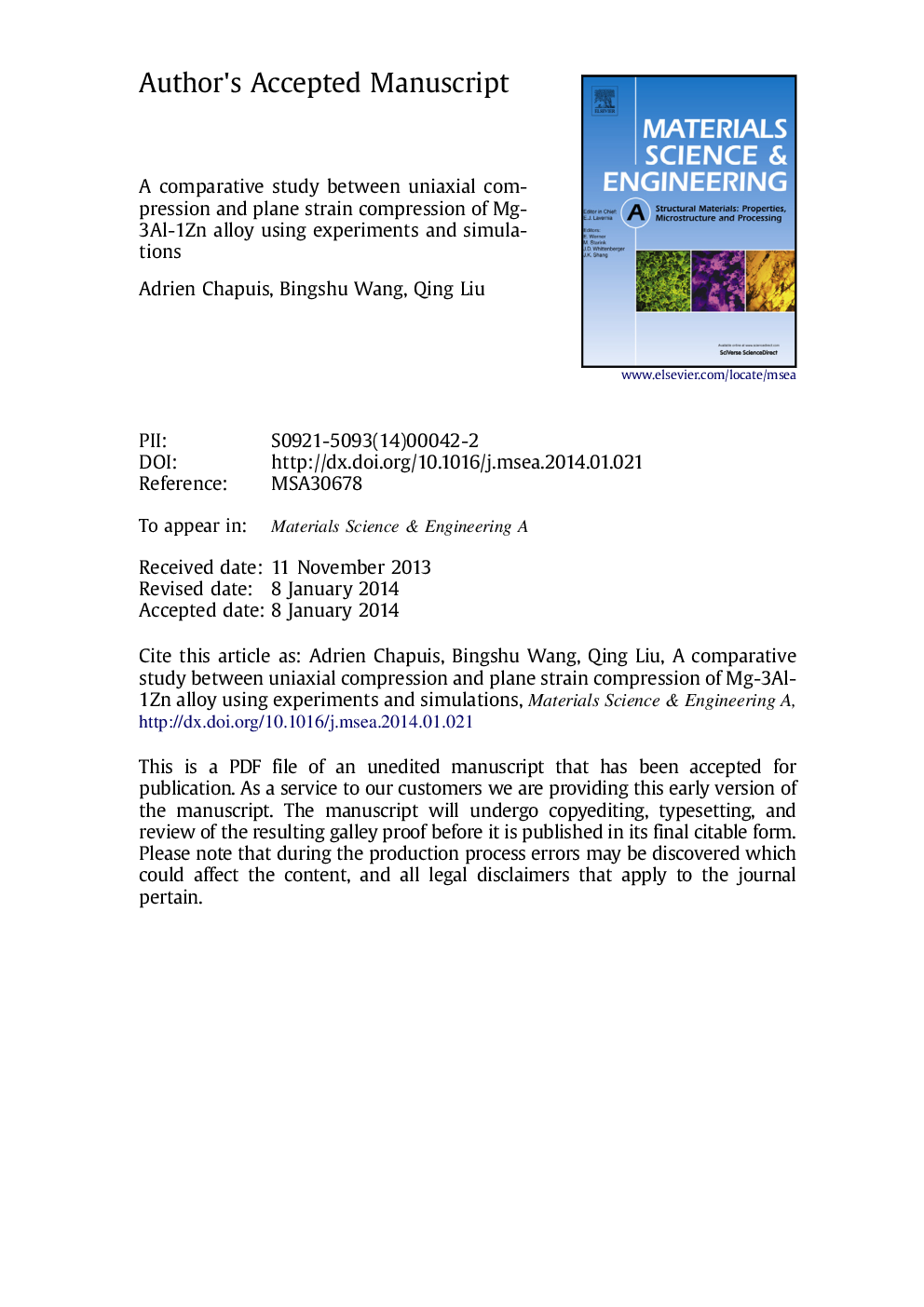| کد مقاله | کد نشریه | سال انتشار | مقاله انگلیسی | نسخه تمام متن |
|---|---|---|---|---|
| 7981626 | 1514746 | 2014 | 32 صفحه PDF | دانلود رایگان |
عنوان انگلیسی مقاله ISI
A comparative study between uniaxial compression and plane strain compression of Mg-3Al-1Zn alloy using experiments and simulations
دانلود مقاله + سفارش ترجمه
دانلود مقاله ISI انگلیسی
رایگان برای ایرانیان
کلمات کلیدی
موضوعات مرتبط
مهندسی و علوم پایه
مهندسی مواد
دانش مواد (عمومی)
پیش نمایش صفحه اول مقاله

چکیده انگلیسی
Magnesium anisotropic behavior is enhanced by different deformations paths and modes. The mechanical anisotropy during plastic deformation of a Mg-3Al-1Zn magnesium alloy was examined by uniaxial compression (UC) and plane strain compression (or channel-die CD) at room temperature. The mechanical behavior and the observed microtextures were compared with the predictions obtained from different crystal plasticity models. A hot rolled AZ31 magnesium alloy plate with a strong basal texture was stressed along four different directions to initiate different deformation mechanisms. In both UC and CD, the compression along the transverse direction generated mainly {10â12} extension twins, while compression along the normal direction (Z=ND) was initially accommodated by pyramidal ãc+aã slip followed by contraction twinning. During compression at 45° of the normal direction to the transverse direction, both slip and twinning took part in the deformation. The sample compressed in CD along the rolling direction and with the normal direction constrained was deformed by prismatic slip and tension twinning. It was found that basal slip was an important deformation mechanism in all the samples. Simulations were made with different models, and the simulated flow stresses were higher in CD than that in UC, but slightly underestimated in case of uniaxial compression. Modeling also corroborated higher {10â11} compression twinning activity in CD than that in UC, and that compression twinning resulted in a decrease in flow stress in CD. To fit with the experimental flow stresses, it was necessary to take into account an additional hardening caused by twin boundaries. In our model, the {10â12} twin boundaries were estimated to increase the critical resolved shear stress (CRSS) of prismatic slip by about 30%. However, twin induced hardening on pyramidal ãc+aã and basal slip of about 10% is also necessary if contraction twinning do not soften the material.
ناشر
Database: Elsevier - ScienceDirect (ساینس دایرکت)
Journal: Materials Science and Engineering: A - Volume 597, 12 March 2014, Pages 349-358
Journal: Materials Science and Engineering: A - Volume 597, 12 March 2014, Pages 349-358
نویسندگان
Adrien Chapuis, Bingshu Wang, Qing Liu,